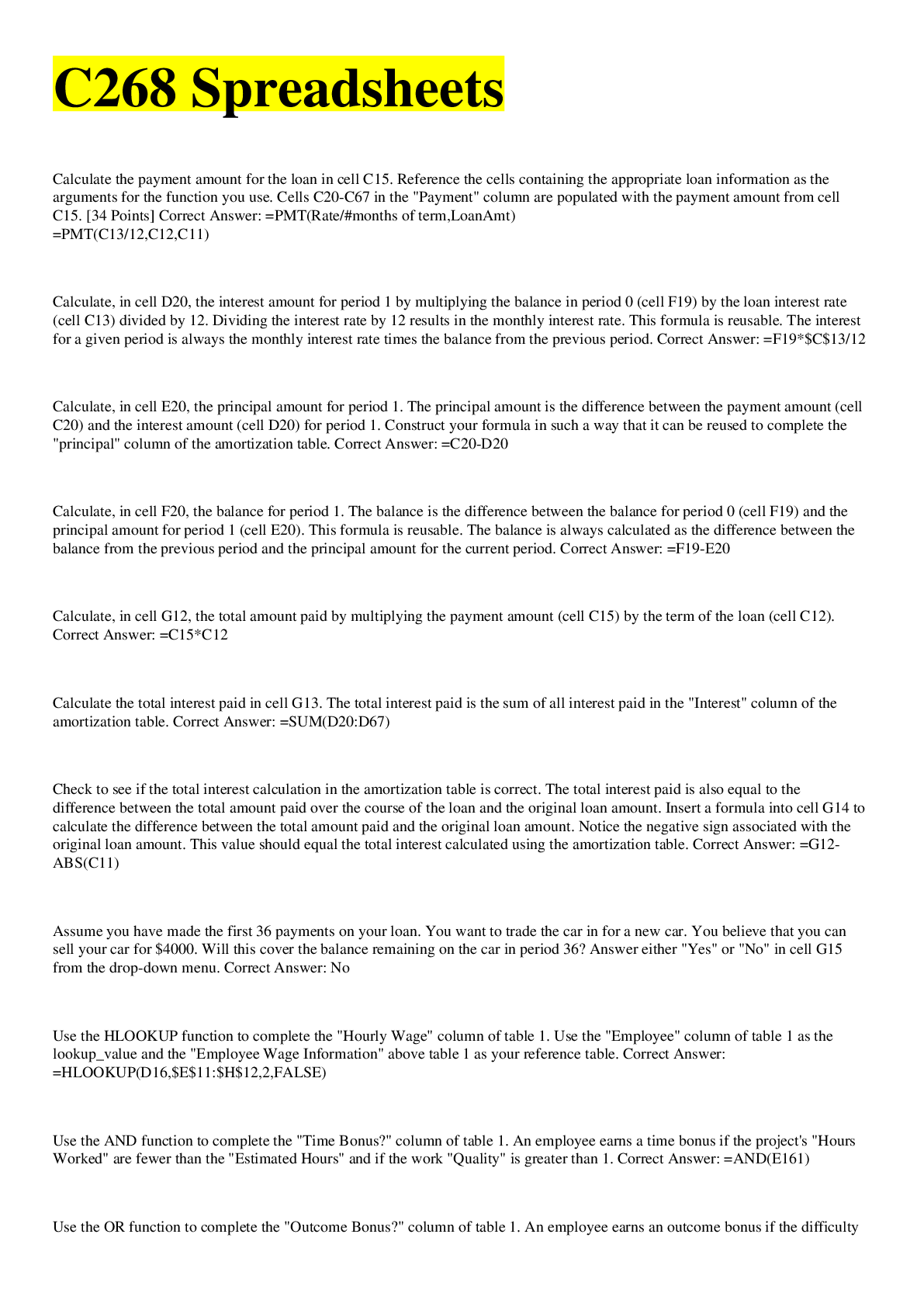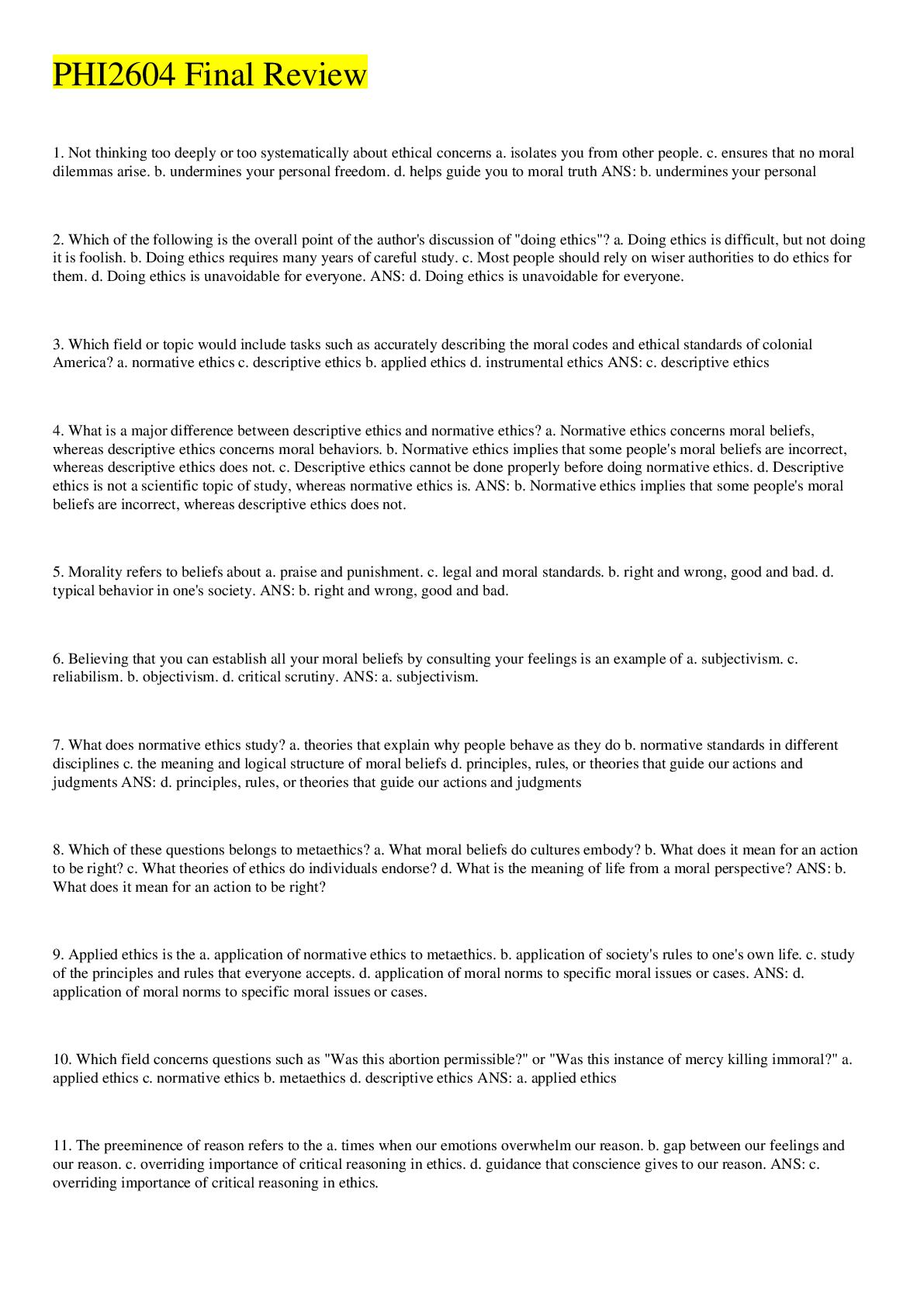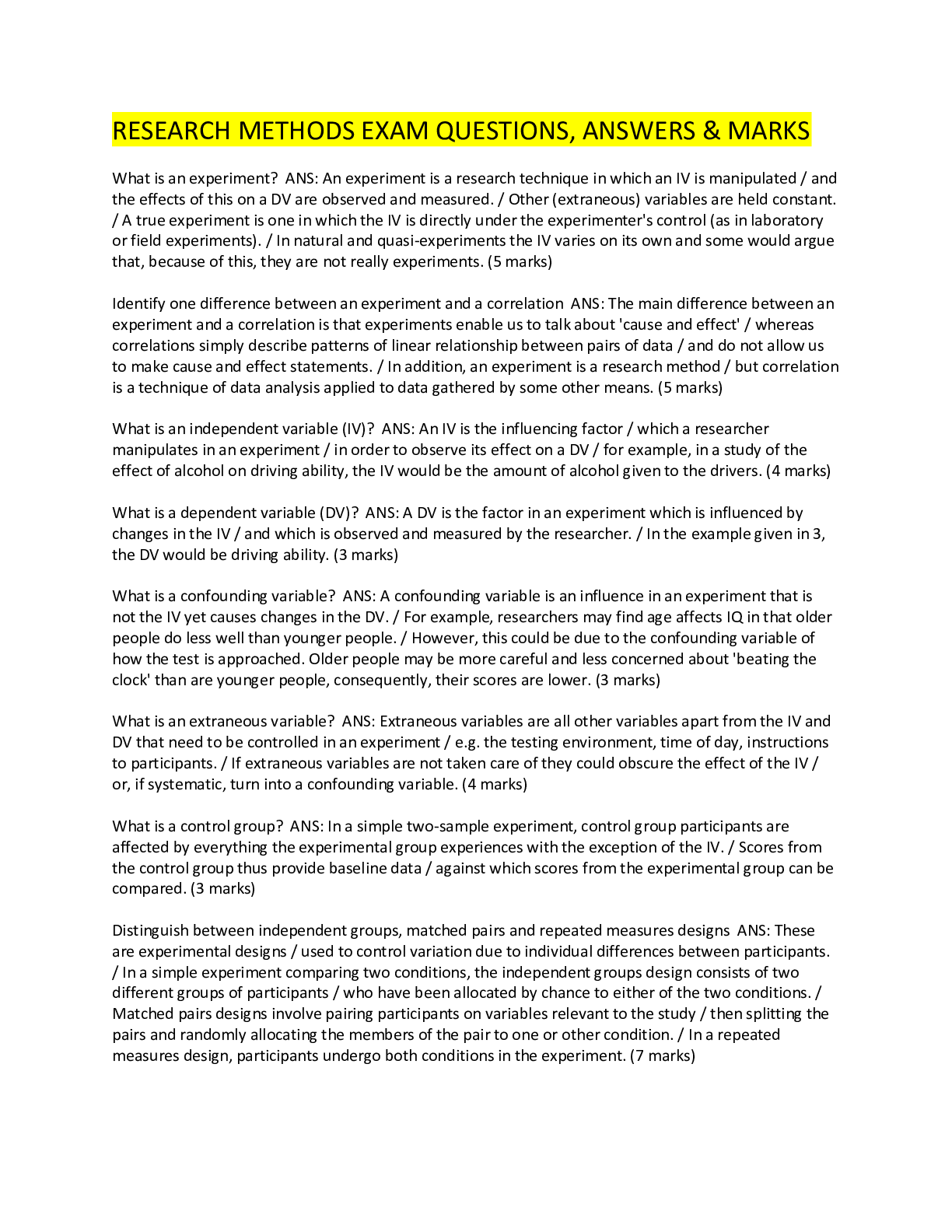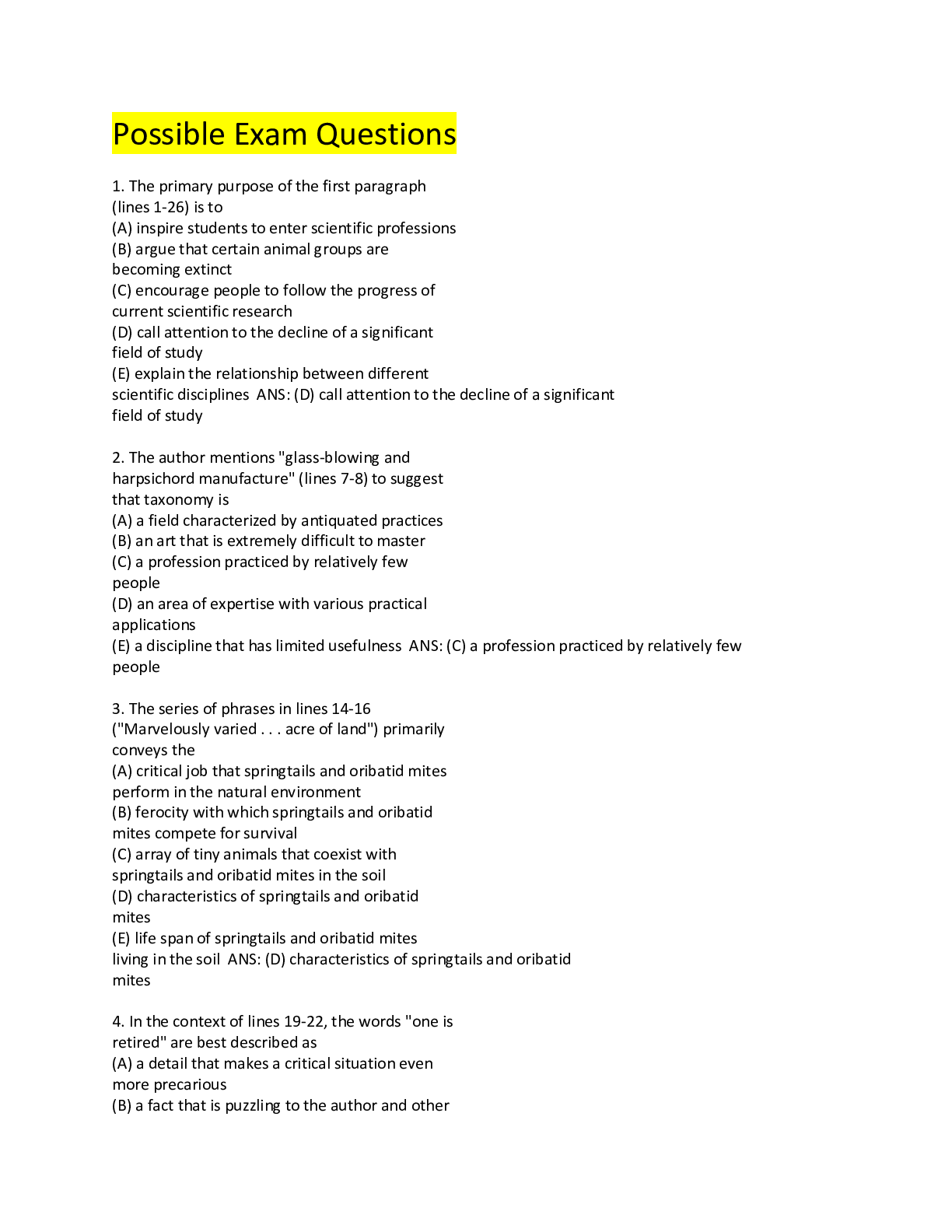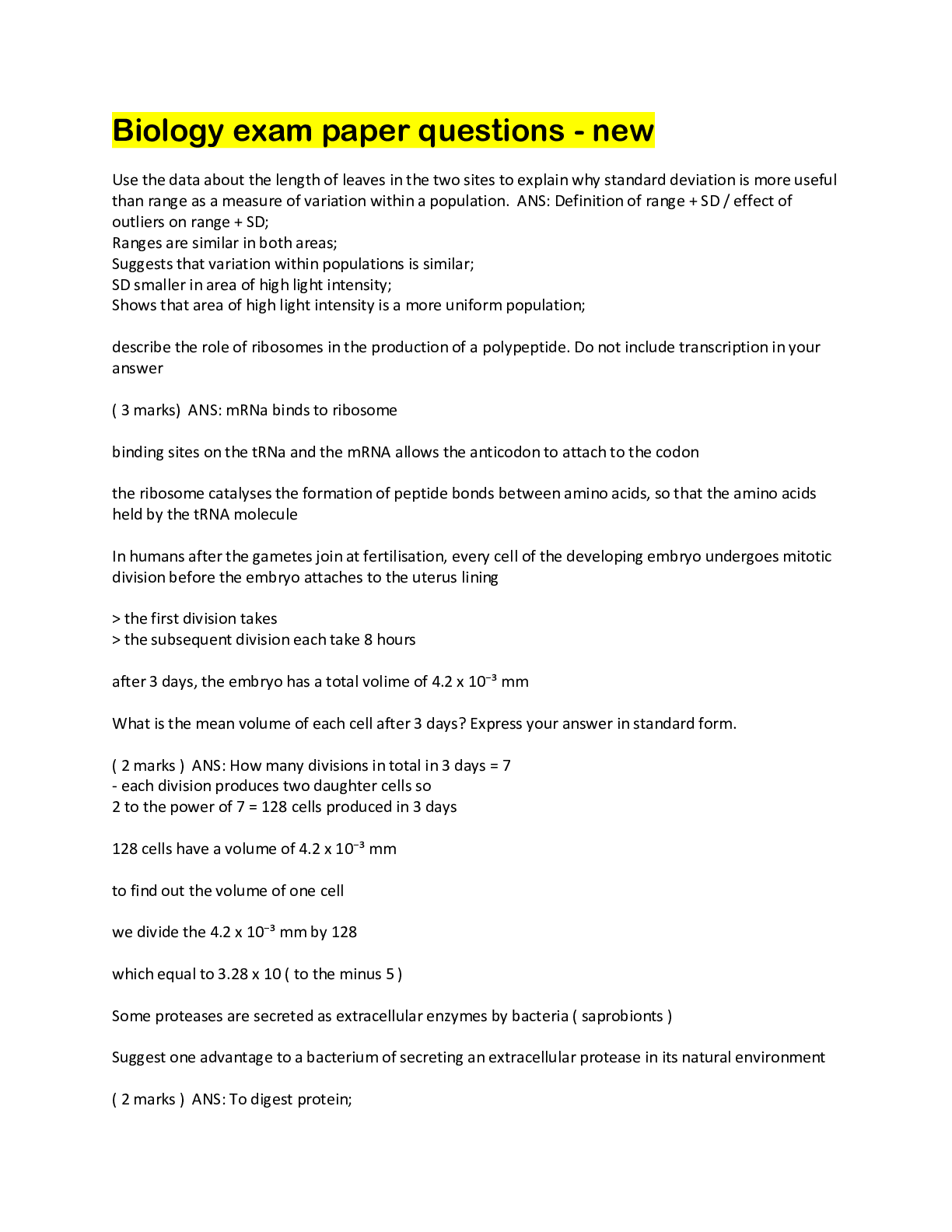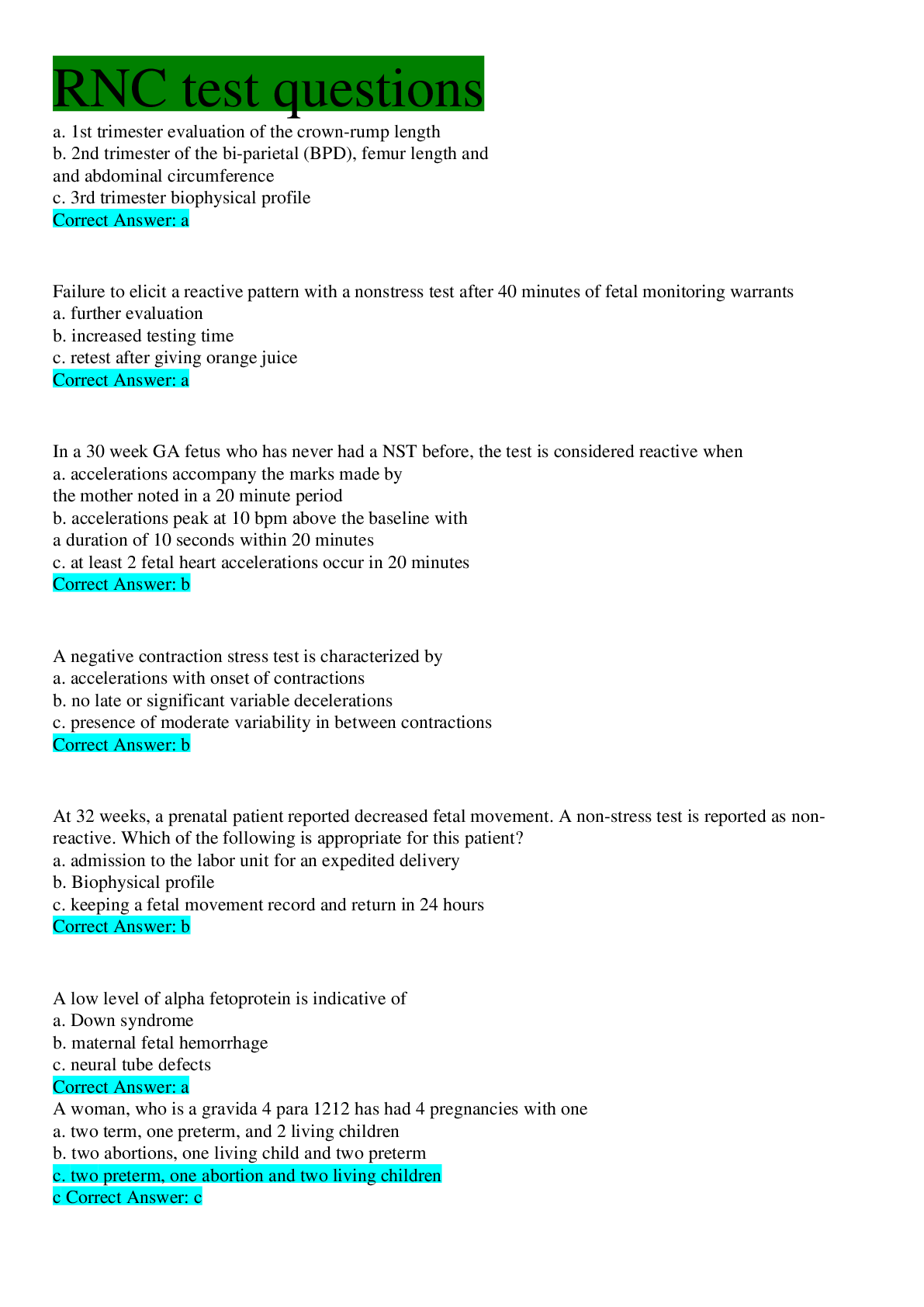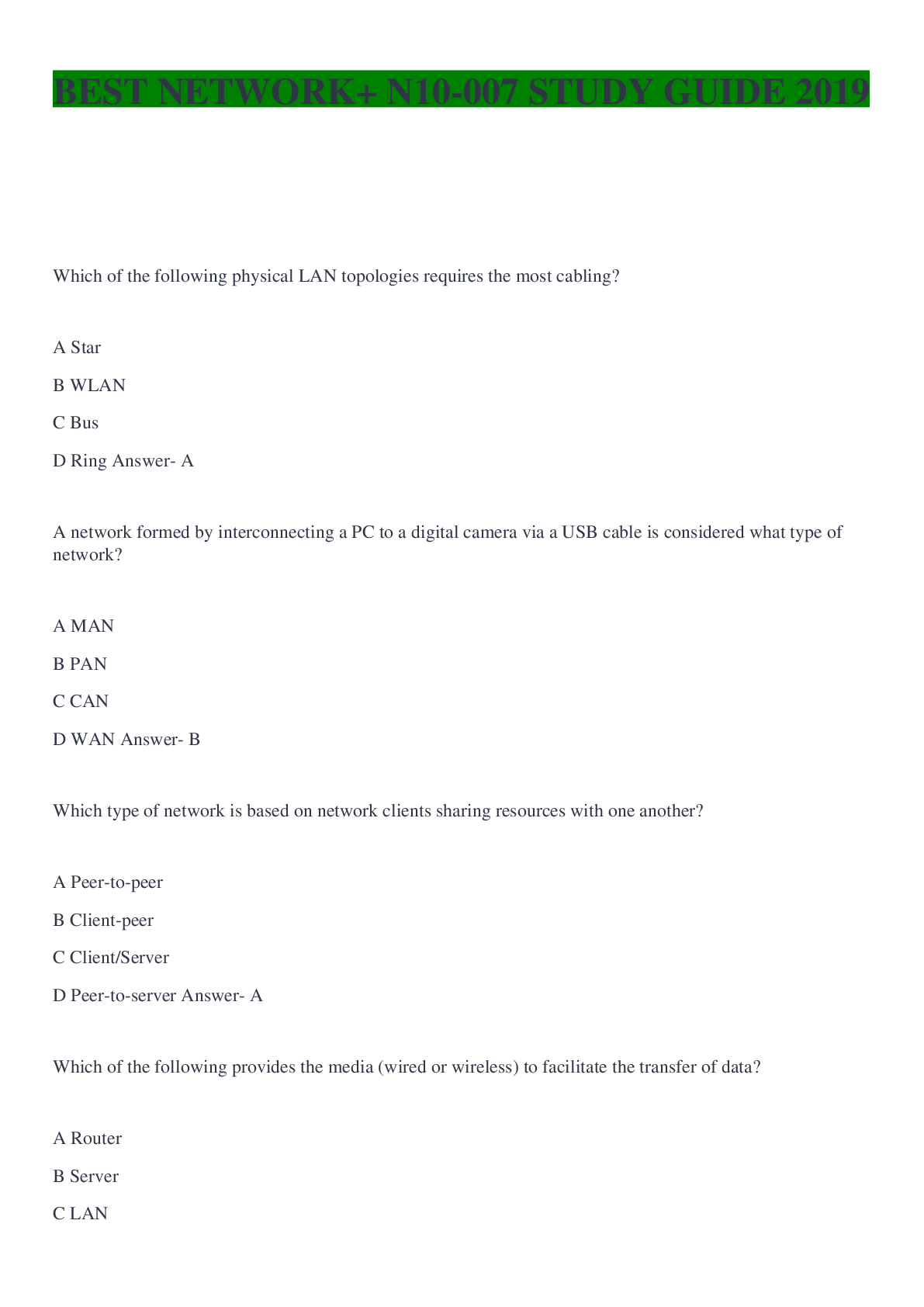Biology > STUDY GUIDE > PHY 102: Exam and Homework Q's and Answers (All)
PHY 102: Exam and Homework Q's and Answers
Document Content and Description Below
PHY 102: Exam and Homework Q's and AnswersWhich of the following are parts of the scientific process, as described in class? (Check all that apply). Answer- A. building a theory or hypothesis E. care... ful observation or measurement F. experimental tests of a hypothesis H. modification of the model or theory (if needed) The speed of light, c, (measured in meters/second) is...? Answer- E. 300,000,000 A light year is... Answer- C. a unit of distance Color, Wavelength, Frequency, and Energy are all equivalent descriptions for a particular type of light wave. Answer- A. True The energy of light is directly proportional to its... Answer- frequency Which of the following definitions correctly describe the ecliptic? (Check all that apply) Answer- B. the plane in which the Earth orbits the Sun D. the apparent path of the Sun relative to the background stars E. the apparent path of the Sun on the celestial sphere Which of the following explanations correctly describes the reason we see the Sun rise and set each day? Answer- D. The Earth rotates on its axis Which of the following explanations correctly describes the reason Earth's Moon shows phases? Answer- B. The changing angle between the Sun, Moon, and Earth causes a variable fraction of the Moon's surface to reflect sunlight Which of the following are a consequence of the Earth's yearly motion around the Sun? (Check all that apply) Answer- C. different stars are seen at night at different times of the year D. the Sun appears in different constellations in different months E. the Sun changes its height in the sky in different seasons Which of the following explanations correctly describes the reason Earth experiences seasons? Answer- A. The Earth's Northern hemisphere is tilted 23.5 degrees toward the Sun in Summer and away from the Sun in Winter During a partial lunar eclipse... Answer- F. The Moon is partially within the Earth's umbra During an annular solar eclipse... Answer- F. The Moon covers all but the outer ring of the Sun The Ptolemaic cosmology (Claudius Ptolomy's model of the solar system) was predominantly believed for many centuries in Europe. Which statement below is FALSE about the Ptolemaic system? Answer- C. It was much simpler than the earlier models and therefore not as accurate. Of the cosmological models listed below, which placed the Earth at the center of the model? (Check all that apply) Answer- A. Ptolemaic (Claudius Ptolomy) B. Aristotelian (Aristotle) D. Tychonic (Tycho Brahe) Two ingerdients in the scientific method are careful observations, and the formulation of a model (or theory) which adequately explains the observations. The history of astronomy in the post-renaissance period provides a beautiful example of this in the cooperation between... Answer- A. Tycho Brahe's observations, and Johannes Kepler's model The fastest moving planet in our Solar system is... Answer- C. the planet nearest the Sun An engineer who designs "static" structures knows that a particular design is a failure if... Answer- E. the structure becomes too dynamic. A car is parked on a hill. Besides its weight and a frictional force on the tires and brakes, what other force must act in order to keep the car "static"? Answer- D. The normal force: the ground pushing on the car. You're driving down the highway and a bug hits your windshield and sticks there. Which undergoes the greater change in momentum? Answer- B. both undergo the same sized change in momentum In a roller coaster you are taken to the top of the tallest hill, then allowed to coast over the rest of the track. At the lowest point on the track... Answer- C. your kinetic energy is a maximum. A human "cannonball" is shot from a cannon and follows a parabolic path into a net. At the top of her trajectory... Answer- A. None of the other answers are correct (all different types of energy) What happens to the kinetic energy in a TOTALLY elastic collision? Answer- A. Kinetic energy is conserved (it is all recovered and measured as kinetic energy of the objects after the collision). What happens to the kinetic energy in a totally IN-elastic collision? Answer- C. Kinetic energy is completely converted into other forms of energy and none remains after the collision (there is no motion of any of the objects after the collision). [Show More]
Last updated: 1 year ago
Preview 1 out of 12 pages
Instant download
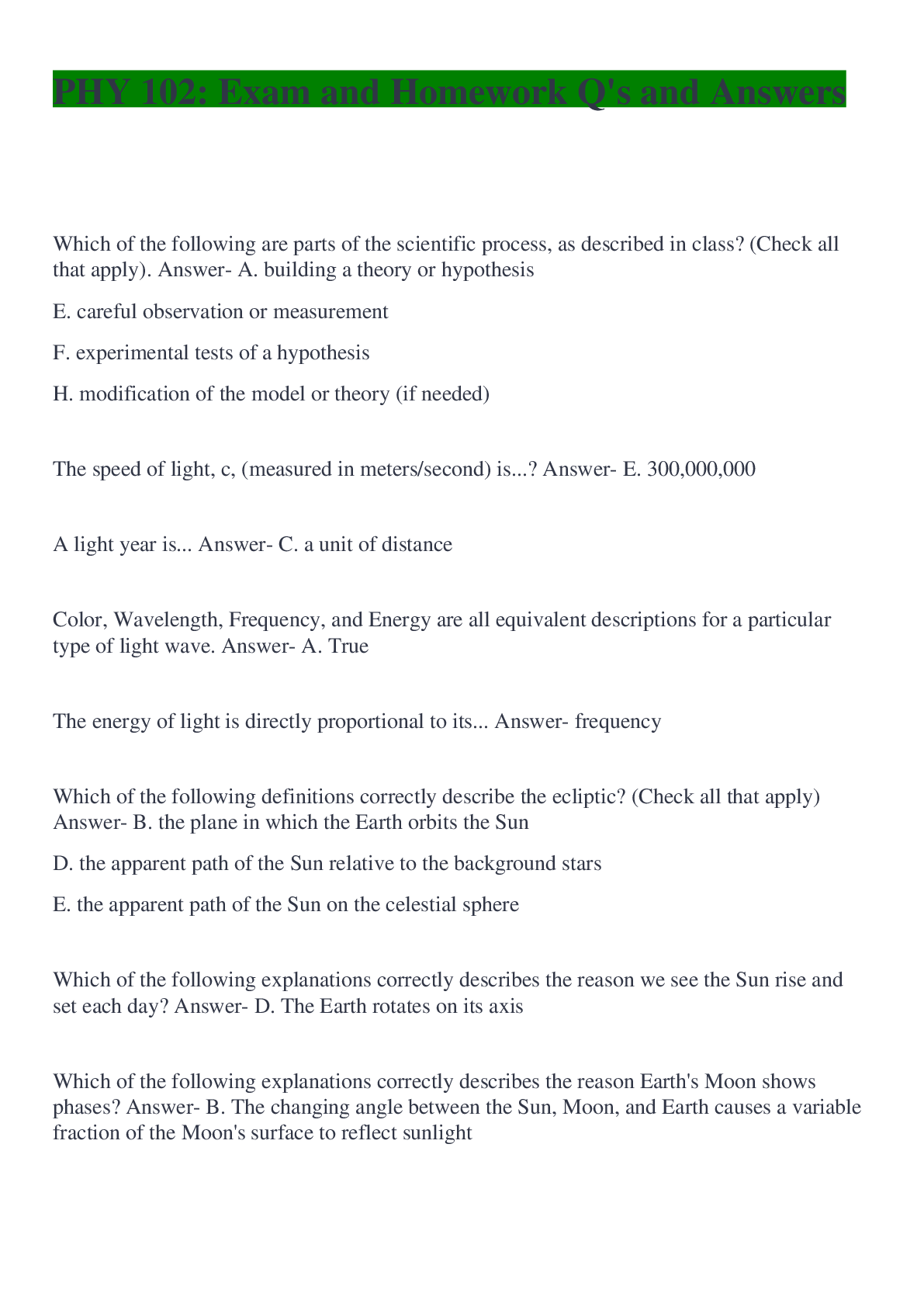
Buy this document to get the full access instantly
Instant Download Access after purchase
Add to cartInstant download
Reviews( 0 )
Document information
Connected school, study & course
About the document
Uploaded On
May 11, 2022
Number of pages
12
Written in
Additional information
This document has been written for:
Uploaded
May 11, 2022
Downloads
0
Views
85

